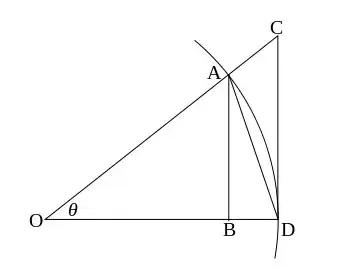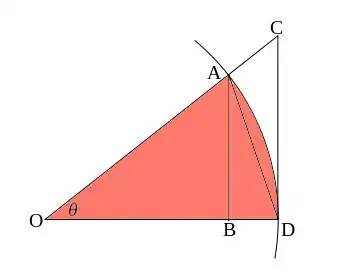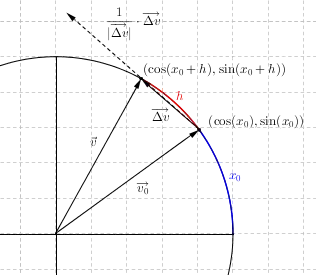In trying to write a nice proof of the derivatives of $\sin(x)$ and $\cos(x)$, I encountered a serious problem, namely that I have never seen a proper definition of the notion of arc length. Based on visual intuition (for whatever that means), I tried to argue as follows:
Consider the following diagram:
The chord $AC$ is shorter than the red arc which is again (by visual intuition) shorter than the path $ABC$. This means that $$2s<arc<2d$$ Note that $|OD|=\sqrt{1-s^2}$ by the Pythagorean theorem. Now, since $\Delta ABD$ and $\Delta OAD$ are similar, we see that $$\frac sd=\frac{\sqrt{1-s^2}}1$$ so dividing the chord length $2s$ by $2s,arc$ and $2d$ considering inequalities from before we then have $$1>\frac{2s}{arc}>\frac{2s}{2d}=\sqrt{1-s^2}$$ and it follows that $$\frac{2s}{arc}=\frac{chord}{arc}\longrightarrow 1\quad\text{when}\quad chord,arc\longrightarrow 0$$
Problem: Since the inequality $arc<2d$ was based solely on intuition, I could just as well have claimed that $\frac{chord}{arc}\longrightarrow 1$ by intuition in the first place anyway. Perhaps my intution about the inequality is stronger than my intuition about the limit, but that does not make it more rigorous ...
Question: How can we define the notion of arc length and based on that show rigorously that $arc<2d$?



